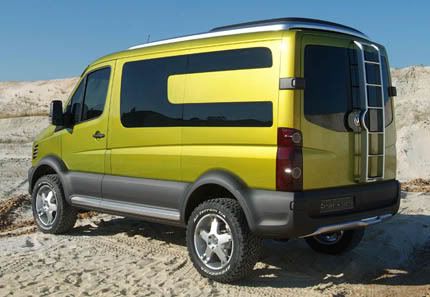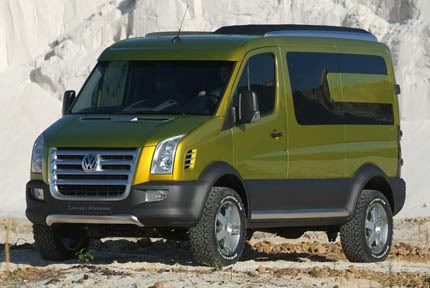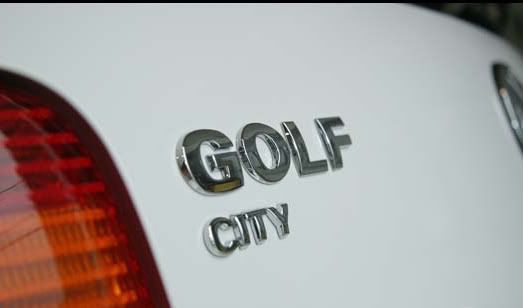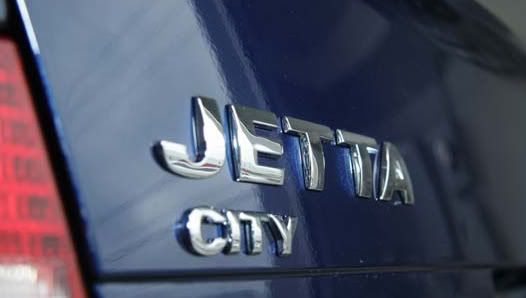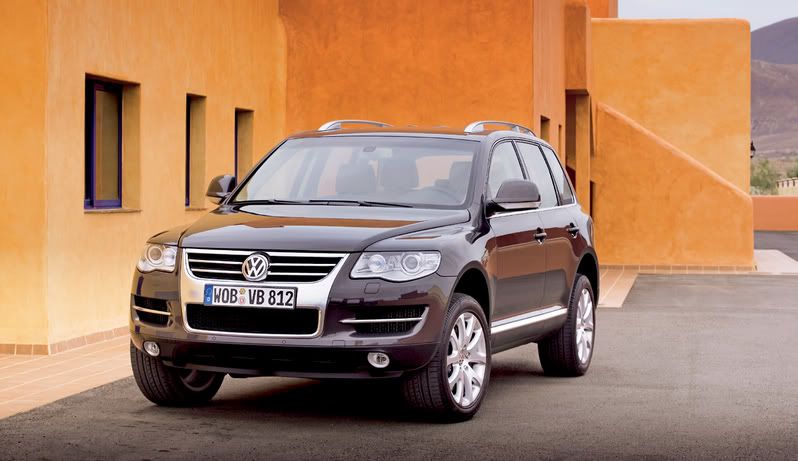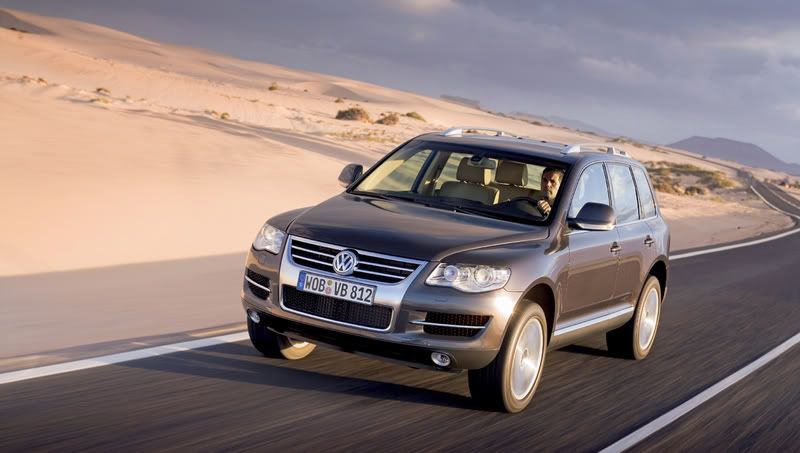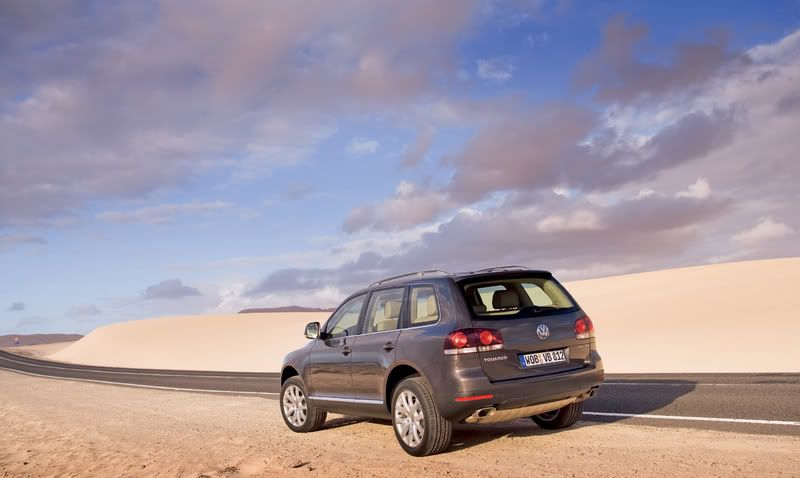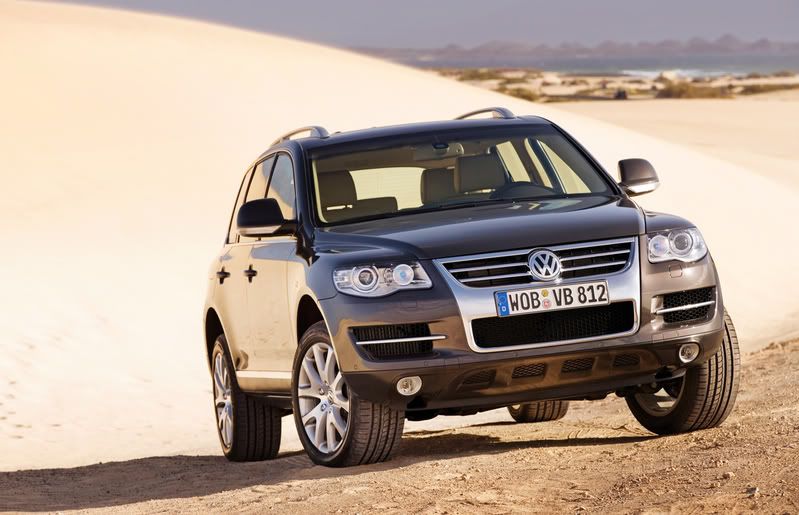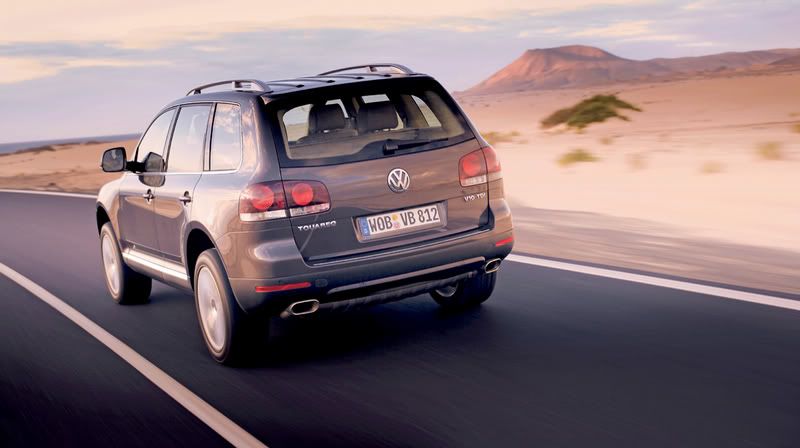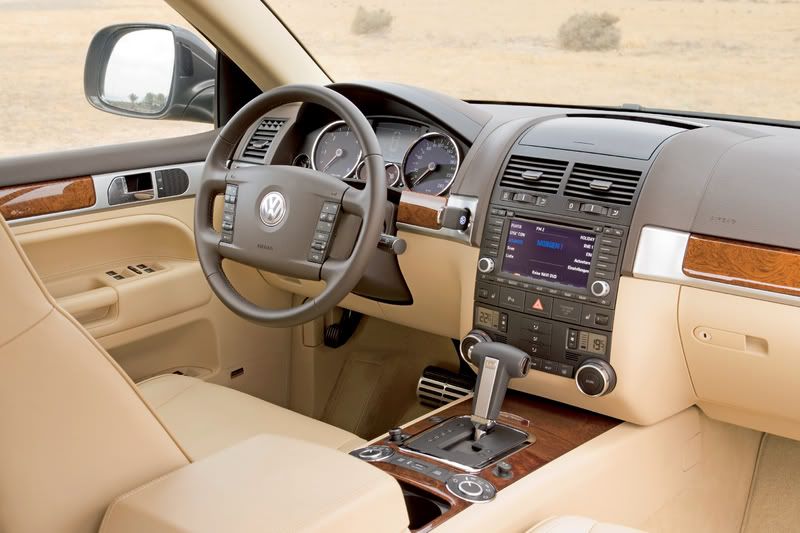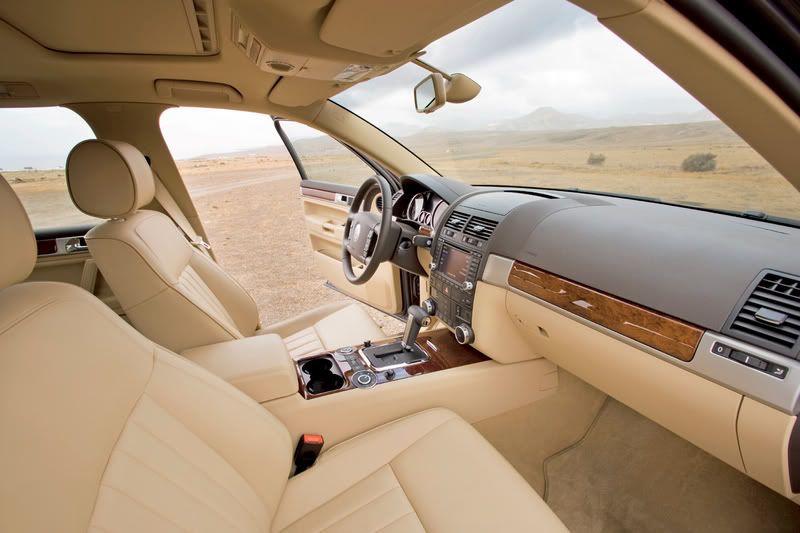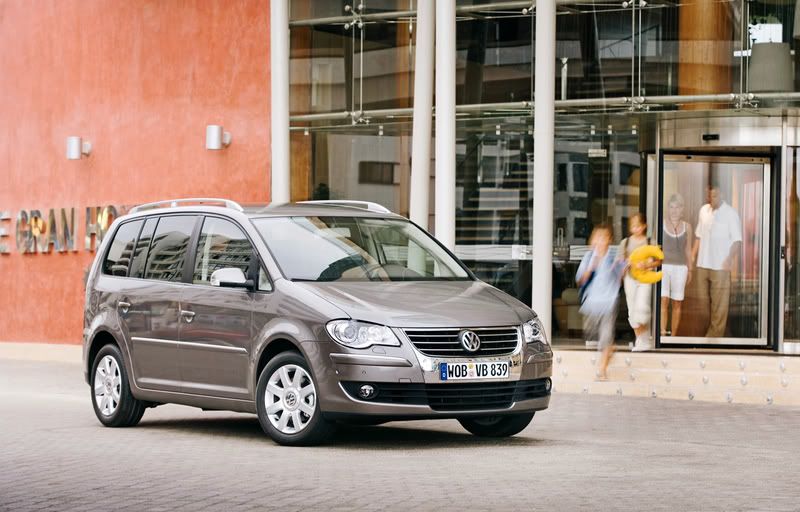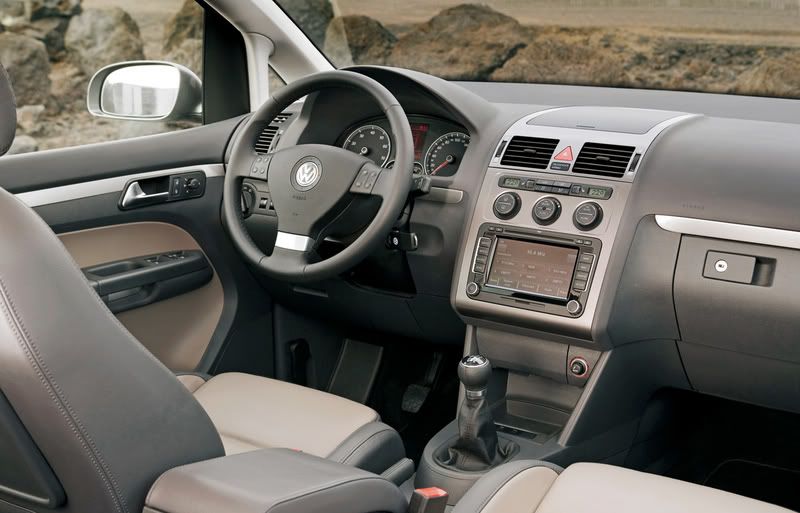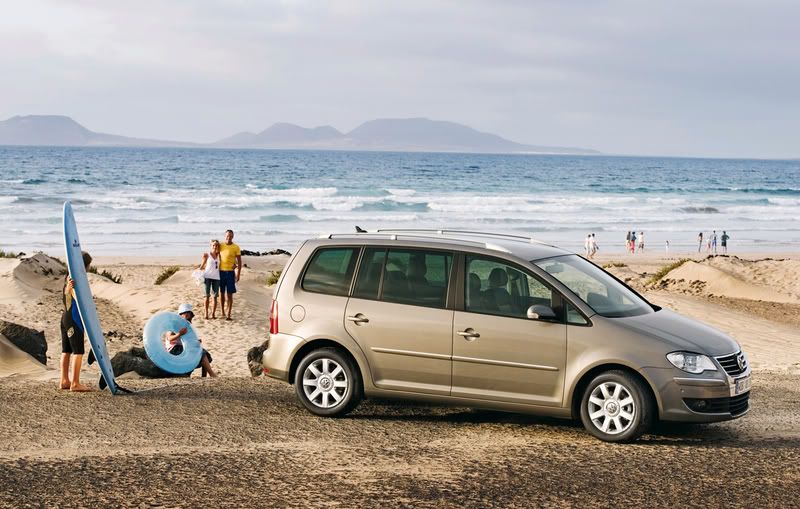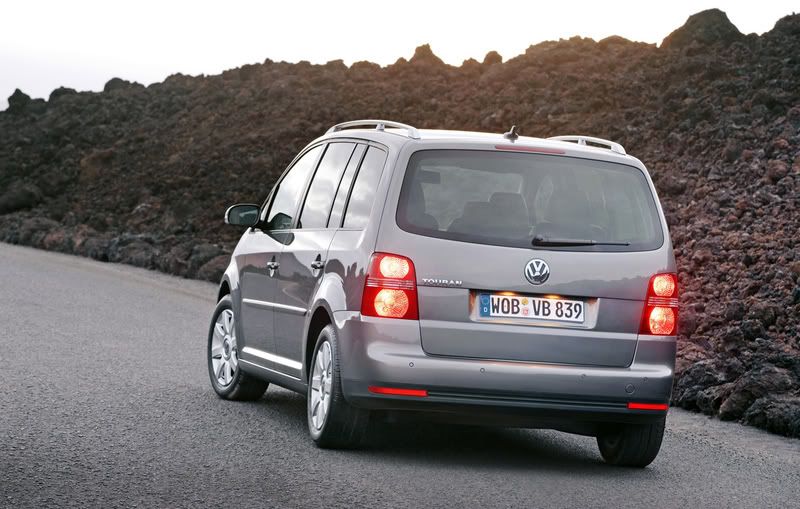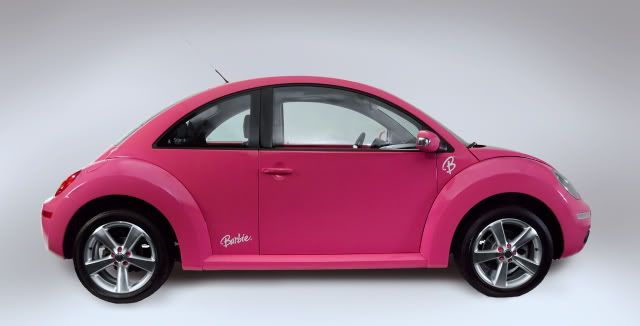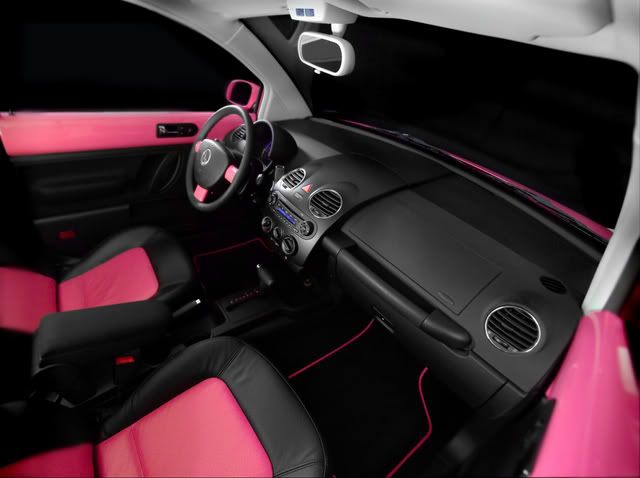Paris Motor Show: Volkswagen CrossGolf
Posted by Lorenzo at 2:41 pm
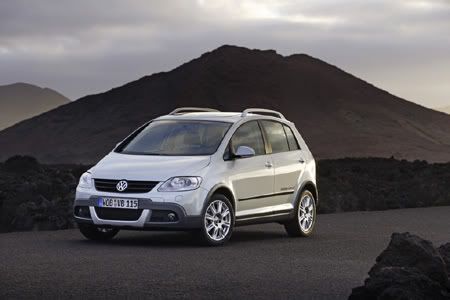 Volkswagen today launched another variation to the Golf platform called the CrossGolf, thus adding onto the ever expanding Golf line. Based off of Europe's Golf Plus, the CrossGolf is the Golf platform's most SUV-like model, that is, until the Tiguan is launched in 2008.
Volkswagen today launched another variation to the Golf platform called the CrossGolf, thus adding onto the ever expanding Golf line. Based off of Europe's Golf Plus, the CrossGolf is the Golf platform's most SUV-like model, that is, until the Tiguan is launched in 2008.The CrossGolf's exterior treatment is similar to its smaller cousin, the CrossPolo. Bumpers and wheel arches and rocker panels are covered in dark plastic trim in an effort to give the CrossGolf a muscular and rugged appearance. Front end treatment is what's expected from Volkswagen as of late with a stylized shield grille and, of course, more plastic trim. The rear remains more or less the same to the Golf Plus except for a silver skid plate. Speaking of silver, a pair of roof rails dominate the top of the vehicle.
Moving the CrossGolf is an easy affair with a choice of 4 engines (2 petrol and 2 diesel). The top petrol engine is a 1.4L TSI that produces 140 hp. the top diesel is a 2.0L. Both can be paired with a manual or DSG.
Press release and photos after the jump.
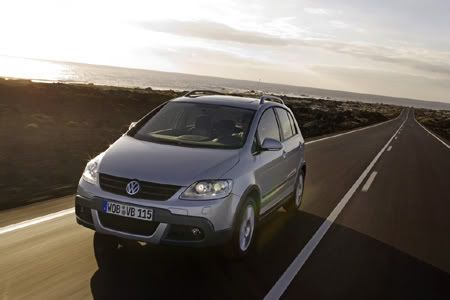
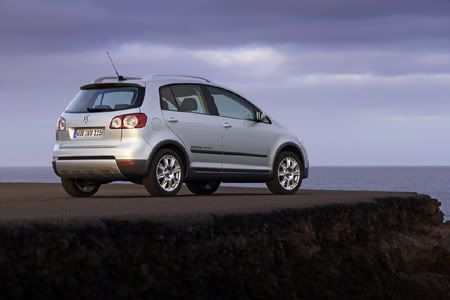
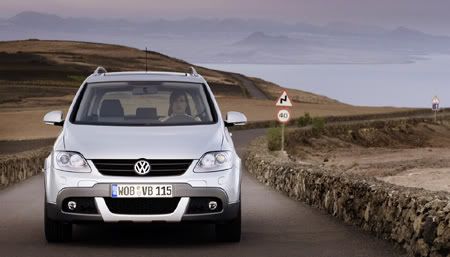
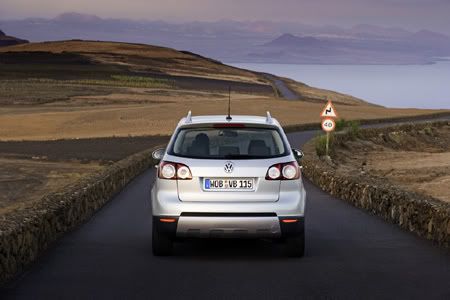
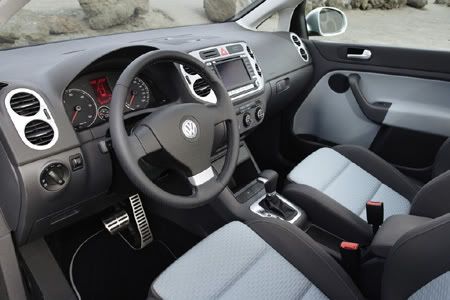
Source: Volkswagen AG.
Paris Motor Show 2006 - World premiere I: CrossGolf combines worlds of the SUV and MPV
Body with a redesigned look in the style of a compact SUV
Interior based on the Golf Plus shows great versatility and fresh colors
Wolfsburg/Paris, 28 September 2006 - Volkswagen is celebrating the world premiere of a new version of the Golf at the Paris Motor Show: the CrossGolf. It merges the can-do qualities of a compact SUV with the versatility of a small MPV into a new crossover model. Like its little brother – the successful CrossPolo – the CrossGolf was also individually conceived by the experts division in matters of refinement and special vehicles at Volkswagen.
Positioning.
SUV means "Sports Utility Vehicle", denoting a significantly more "civilian" stage on the path to the "tough" off-road vehicle. In terms of body the CrossGolf shares the same can-do spirit with this vehicle. Approx. 480,000 compact SUVs were sold in Europe in 2005. MPV means "Multi Purpose Vehicle", referring to a van. With its versatile and spacious interior the CrossGolf also bridges this segment. Just under 1.4 m compact SUVs were sold in Europe in 2005. SUV and MPV – the new CrossGolf is precisely positioned between these poles. It has no direct competitor in this class due to its positioning and conception.
The front-wheel drive only CrossGolf is based on the Golf Plus Sportline. And that's why the CrossGolf also features practical details such as a foldable back seat that can even be moved lengthwise, folding tables on the backs of the front seats and pigeonholes below, an elevated seating position and the basic four doors and large hatchback. The new kid on the block features parallels to the SUV world on the outside. Characterizing the CrossGolf here are special side coverings, independent bumpers and 20 mm higher ground clearance, including 17" wheels and much more. For the European market launch in November the Volkswagen will be available with two gasolinepowered engines (1.6 + 1.4 TSI) and two turbodiesel engines (1.9 TDI + 2.0 TDI) with output ranging from 75 kW / 102 PS to 103 kW / 140 PS. Like all Golfs, the new model will have the ESP stabilization system including counter-steering feature and trailer stabilization, ABS along with brake assistant and six airbags as standard equipment. As standard equipment: the "Climatic" air-conditioning system.
EXTERIOR – THE SUV IN THE CROSSGOLF /
Robust bumpers, wheel arches and side trim as well as more ground clearance
On the exterior numerous modifications distinguish the CrossGolf from the classical GolfPlus design. Especially striking here are the new CrossGolf "Ice Silver" color, new bumpers and the all-round integrated coverings from a robust as well as first-class carbon fiber in "Anthracite Satin Effect" color. The side sills, wheel arches, door frame and bumpers are covered.
Front section.
The top-class body covering frames the lower-set radiator air inlets in the front and the fog lights integrated there as standard equipment. The mid-section of the bumper was designed in the style of an underride protection; it is kept in a silver shade. Its V-shape is continued in the contoured sweep of the engine hood.
Rear section.
Just as striking is the rear bumper with a stylized underride protection that has also proved popular among SUVs; this element dominates the bumper due to its large width. In its design effect the silver underride protection underscores the powerful appearance of the new CrossGolf.
Side section.
The standard roof railing is finished in "Brilliant Chrome" silver. In terms of design, the 17 inch light alloy wheel rims are also related to the wheels of the CrossPolo. Apart from these light elements, it is again the contrast to the dark coverings that gives the silhouette of the CrossGolf its own unique character. The wheel arches were also covered similar to the successful CrossPolo. The protective covering in easy terrain goes from the wheel arches into the sides of the bumpers and over to the side sills. These in turn have a strong effect, because the lower door frames are also covered and visually form a single unit with the arches. Along with the side trim that is also reinforced, this provides effective protection against the denting that can occur on mean city streets when the doors of parallel parked cars are opened carelessly.
INTERIOR – THE MPV IN THE CROSSGOLF /
Raised seating position, adjustable rear seat, up to 1,450 l of cargo volume
Just like the outside, the interior of the CrossGolf features a high-contrast world of colors. The interior trim was specially developed for the new model. This includes the materials and coloring of the seat and door coverings and the dashboard appointments.
Seats.
The inner sections of the seats and armrests feature a waff le structure; they also contrast in color from the sides and the backs of the seats. The backs of the driver and passenger seats are also outfitted with folding tables and storage pockets. A practical storage compartment is also located under each of the standard equipment sports seats. The door coverings match the seats in appearance. The upholstered interior is kept in the same shade of color as the inner sections of the seats.
Cockpit.
The CrossGolf is also distinguished by the dashboard appointments in silver metallic. Unlike in the Golf Plus, the overall eight round air emission vents feature "Ice Silver Metallic" rings. Also standard equipment aboard the new CrossGolf: a three spoke leather steering wheel, leather covered shift lever, a specially designed shift lever knob (not with DSG), many storage compartments, inside door trim with CrossGolf logo, pedal caps in top-quality aluminum finish and floor mats framed in a contrasting shade of green.
Interior dimensions.
Like the basic Golf Plus the interior of the CrossGolf features a high degree of versatility and markedly good ergonomics. In front driver and passenger benefit equally: The combination of comparatively high dashboard and raised seating position 7.5 cm higher than the "classic" Golf (plus 8.5 cm in the back) creates a feeling of spaciousness similar to that offered by a compact SUV. This impression reinforces the interior height of 100.7 cm (97.6 cm in back). In addition, the CrossGolf offers lots of leg space in both front and back. And that's not all: Depending on position the back seat that can be split, moved lengthwise or folded down, the volume of the cargo area can vary between a minimum of 395 and a maximum of 505 liters. If the back seat rests are folded down completely up to 1,450 liters of cargo volume is available. The cargo area f loor is also adjustable: Additional cargo space is created if it is placed in the higher of two possible positions.
DRIVE TECHNOLOGY /
Twincharger (FSI) with turbo and compressor unique in this class
Volkswagen will offer the CrossGolf with two gasoline and two diesel engines. The entry-level version of the gasoline engines achieves 75 kW / 102 PS, the basic TDI engine generates 77 kW / 105 PS. The top of the line engines (1.4 TSI and 2.0 TDI) are each 103 kW / 140 PS strong. The Twincharger 1.4 TSI deserves special attention. Thanks to twin charging via compressor and turbocharger it features an extremely high-torque and agile characteristic. Nevertheless, the engine is exceptionally thrifty. Like the two TDIs equipped with a particle filter, the TDI can also be equipped with a DSG direct shift gearbox.
Note:
The data and equipment included in this press information applies to the range of models offered in Germany. There may be differences in other countries.
We reserve the right to make changes. Errors and omissions excepted.
The terms DSG, FSI, TDI and TSI are registered trademarks of Volkswagen AG or other companies of the Volkswagen Group in Germany.

